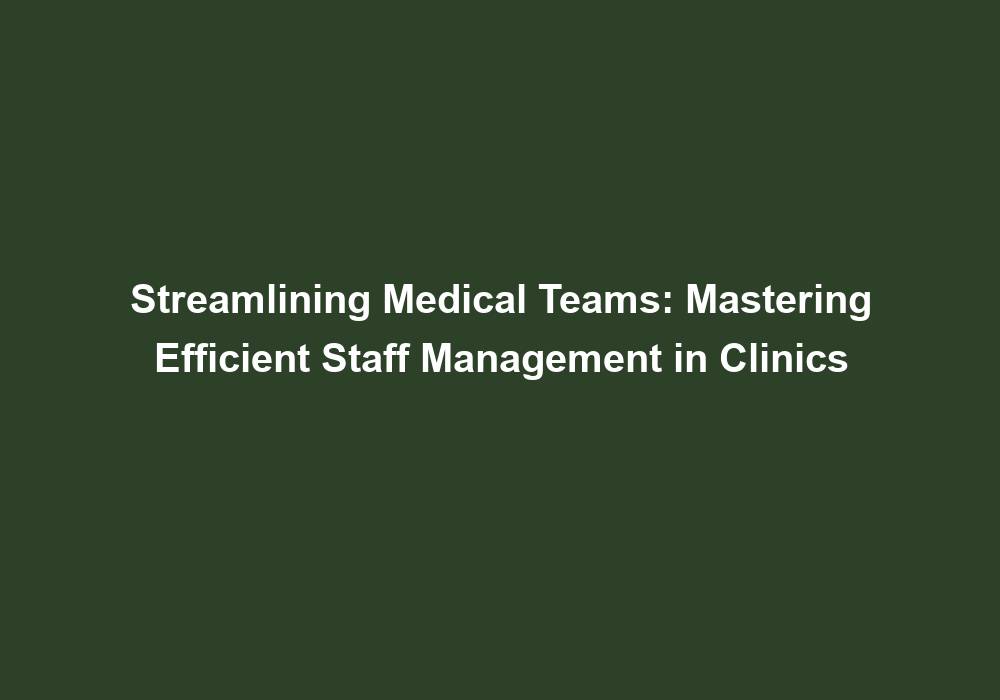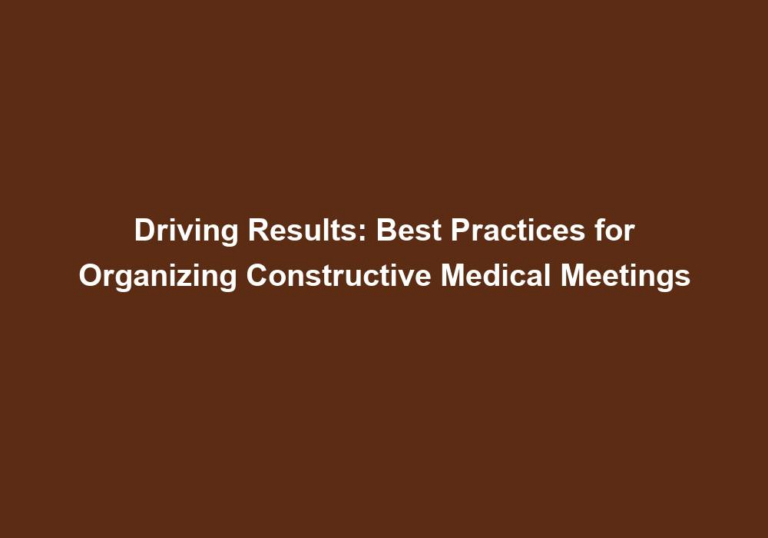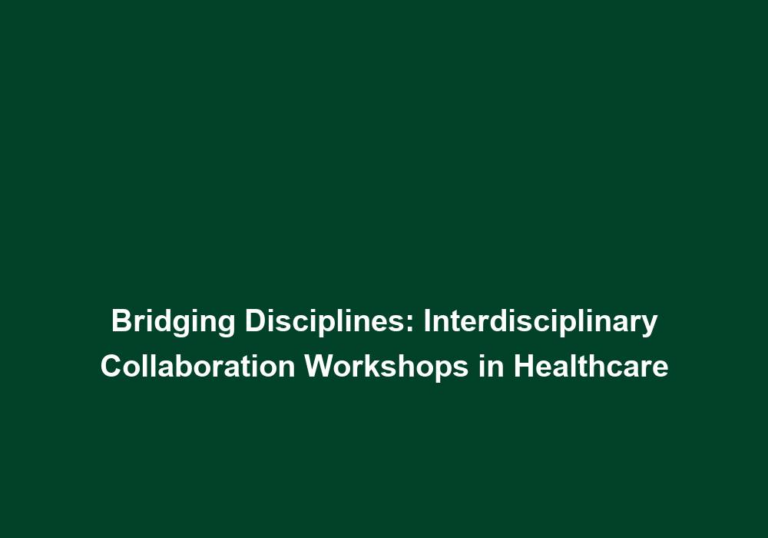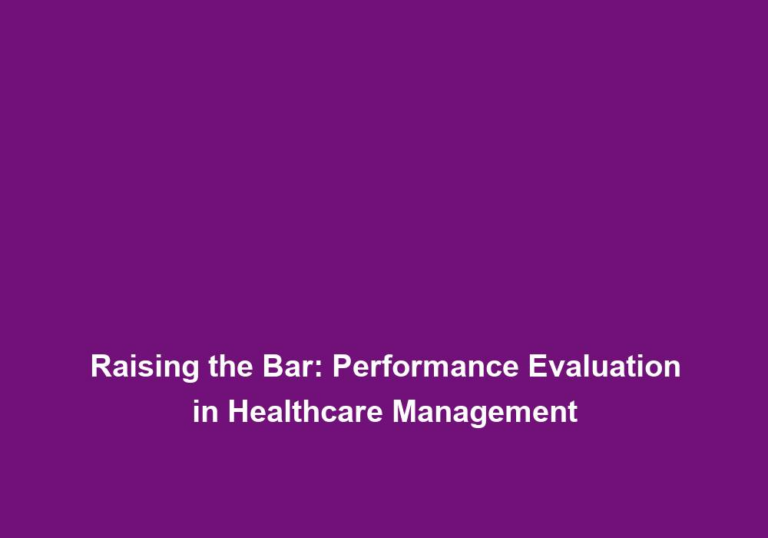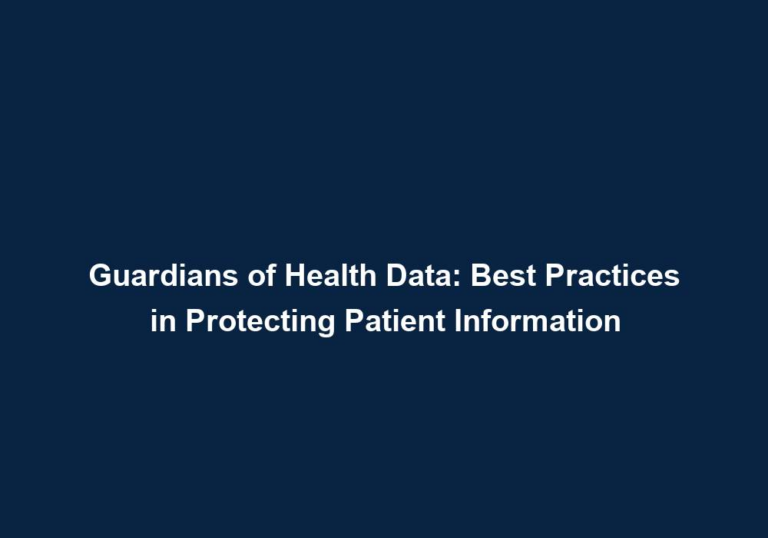Streamlining Medical Teams: Mastering Efficient Staff Management in Clinics
In today’s fast-paced healthcare environment, efficient staff management plays a crucial role in the smooth operation of medical clinics. Effective coordination, proper allocation of resources, and streamlined processes are essential to maximize productivity and provide quality patient care. By implementing sound strategies and utilizing modern tools, medical teams can optimize their performance, enhance overall efficiency, and achieve desired outcomes. This article explores key aspects of staff management in clinics and provides valuable insights into streamlining medical teams for improved productivity.
Importance of Efficient Staff Management in Clinics
Efficient staff management is paramount in clinics to ensure optimal utilization of resources, minimize costs, and maintain high-quality patient care standards. Here are some reasons why mastering staff management is crucial in medical settings:
- Enhanced Productivity: Streamlining medical teams helps increase overall productivity by ensuring that staff members are organized, motivated, and working towards common objectives. When roles and responsibilities are clearly defined, team members can focus on their core tasks, leading to improved efficiency and reduced redundancy.
- By clearly defining roles and responsibilities within the medical team, each staff member can understand their specific duties and contribute effectively towards achieving common goals. This clarity eliminates confusion and duplication of efforts, allowing team members to work efficiently towards a shared objective.
- Effective staff management also involves regular assessment of individual and team performance. By evaluating strengths, weaknesses, and areas for improvement, clinics can identify top performers and provide necessary feedback. Objective performance metrics can help clinics recognize and reward exceptional work, motivating staff members to maintain a high level of performance.
- Improved Patient Care: Efficient staff management directly impacts patient care outcomes. Well-coordinated teams can provide timely and effective healthcare services, leading to enhanced patient satisfaction and better health outcomes. By optimizing staff allocation, clinics can ensure the availability of skilled professionals and reduce waiting times for patients.
- To enhance patient care, clinics should analyze historical data to identify peak hours and periods of higher patient volume. This information can help clinics allocate staff accordingly, ensuring adequate coverage during busy times and minimizing waiting times for patients.
- Implementing flexible work schedules can also contribute to improved patient care. By introducing schedules that accommodate staff preferences while ensuring adequate coverage, clinics can minimize staff fatigue and maintain a high level of attentiveness, leading to better patient care outcomes.
- Cost-Effectiveness: Effective staff management strategies help clinics optimize their workforce, reducing unnecessary expenses and improving cost-effectiveness. By analyzing patient flow patterns, understanding peak hours, and ensuring appropriate staffing levels, clinics can avoid overstaffing or understaffing situations, leading to better financial management.
- To optimize staffing levels and minimize costs, clinics should carefully analyze patient flow patterns. By understanding when patient volume is highest, clinics can adjust staff schedules accordingly and avoid overstaffing during slower periods. This approach ensures that clinics have the right number of staff members available to meet patient demand, without incurring unnecessary expenses.
- Effective staff management also involves utilizing modern tools and technology. For example, implementing staff scheduling software can automate the scheduling process, ensuring optimal allocation of resources and reducing administrative burden. This streamlines staff management processes and contributes to cost-effectiveness.
- Employee Satisfaction: A well-managed team fosters a positive work environment, enhancing job satisfaction among staff members. By promoting effective communication, recognizing individual contributions, and providing growth opportunities, clinics can boost employee morale and retain talented professionals, resulting in a stable and motivated workforce.
- Effective communication and collaboration are key to fostering a positive work environment. By encouraging team members to share ideas, concerns, and suggestions freely, clinics can create a culture of open communication. Regular meetings, both formal and informal, can facilitate effective communication and promote collaboration among staff.
- Investing in ongoing training programs can also contribute to employee satisfaction. By providing opportunities for professional development, clinics can enhance the skills and knowledge of the medical team. This not only improves the quality of patient care but also boosts staff confidence and job satisfaction.
Strategies for Streamlining Medical Teams
To master efficient staff management in clinics, healthcare administrators and team leaders can adopt the following strategies:
1. Proper Staff Allocation and Scheduling
- Evaluate patient demand patterns: Analyze historical data to identify peak hours and periods of higher patient volume. This will help clinics allocate staff accordingly and ensure adequate coverage during busy times.
- Optimize staffing levels: Avoid overstaffing or understaffing situations by carefully analyzing patient flow patterns and adjusting staff schedules accordingly. This will prevent unnecessary expenses and maintain optimal productivity.
- Implement flexible scheduling: Introduce flexible work schedules that accommodate staff preferences while ensuring adequate coverage. This can improve employee satisfaction and help address unexpected staffing challenges.
2. Effective Communication and Collaboration
- Foster a culture of open communication: Encourage team members to share ideas, concerns, and suggestions freely. Regular meetings, both formal and informal, can facilitate effective communication and promote collaboration among staff.
- Utilize digital communication tools: Leverage technology to streamline communication within the medical team. Instant messaging apps, project management tools, and shared calendars can enhance coordination and ensure everyone stays informed.
- Encourage interdisciplinary collaboration: Promote collaboration among different healthcare professionals to optimize patient care. Encourage joint meetings, case discussions, and knowledge-sharing sessions to foster a multidisciplinary approach towards patient management.
3. Clear Role Definition and Training
- Define roles and responsibilities: Clearly define the roles and responsibilities of each team member to avoid confusion and duplication of efforts. This will enable staff members to understand their specific duties and contribute effectively towards achieving common goals.
- Provide ongoing training and professional development: Invest in continuous training programs to enhance the skills and knowledge of the medical team. This will not only improve the quality of patient care but also boost staff confidence and job satisfaction.
- Cross-train employees: Cross-training staff members in different areas can provide flexibility and ensure seamless operations even during staff shortages or emergencies. This will enhance teamwork and reduce the dependency on specific individuals.
4. Performance Evaluation and Recognition
- Implement performance evaluation systems: Regularly assess individual and team performance to identify strengths, weaknesses, and areas for improvement. Objective performance metrics can help clinics identify top performers and provide necessary feedback and recognition.
- Recognize and reward achievements: Acknowledge and appreciate the efforts of the medical team to motivate and incentivize high performance. Recognizing exceptional work through incentives, awards, or public appreciation can foster a positive work culture and encourage sustained excellence.
Streamlining with Modern Tools and Technology
In addition to the strategies mentioned above, clinics can leverage modern tools and technology to further streamline their medical teams. Here are some examples:
- Electronic Medical Records (EMR): Implementing EMR systems eliminates paper-based documentation, streamlines information sharing, and facilitates efficient communication between healthcare professionals.
- Staff Scheduling Software: Utilize specialized software solutions to automate staff scheduling, ensuring optimal allocation of resources, and reducing administrative burden.
- Task Management Applications: Implement task management applications to assign, track, and manage responsibilities efficiently, ensuring that critical tasks are completed on time.
- Telehealth Technology: Utilize telehealth platforms to expand access to healthcare services, enable remote consultations, and reduce the need for in-person visits, thereby optimizing staff utilization.
By embracing these modern tools, clinics can enhance efficiency, improve patient care, and streamline staff management processes.
Conclusion
Efficient staff management is crucial for the seamless operation of medical clinics. By implementing sound strategies, fostering effective communication, and utilizing modern tools, clinics can streamline their medical teams and optimize performance. Proactive scheduling, clear role definition, ongoing training, and performance evaluation contribute to enhanced productivity, improved patient care, and overall success. With a well-managed and motivated workforce, clinics can provide quality healthcare services, achieve desired outcomes, and stay ahead in today’s competitive healthcare landscape.

